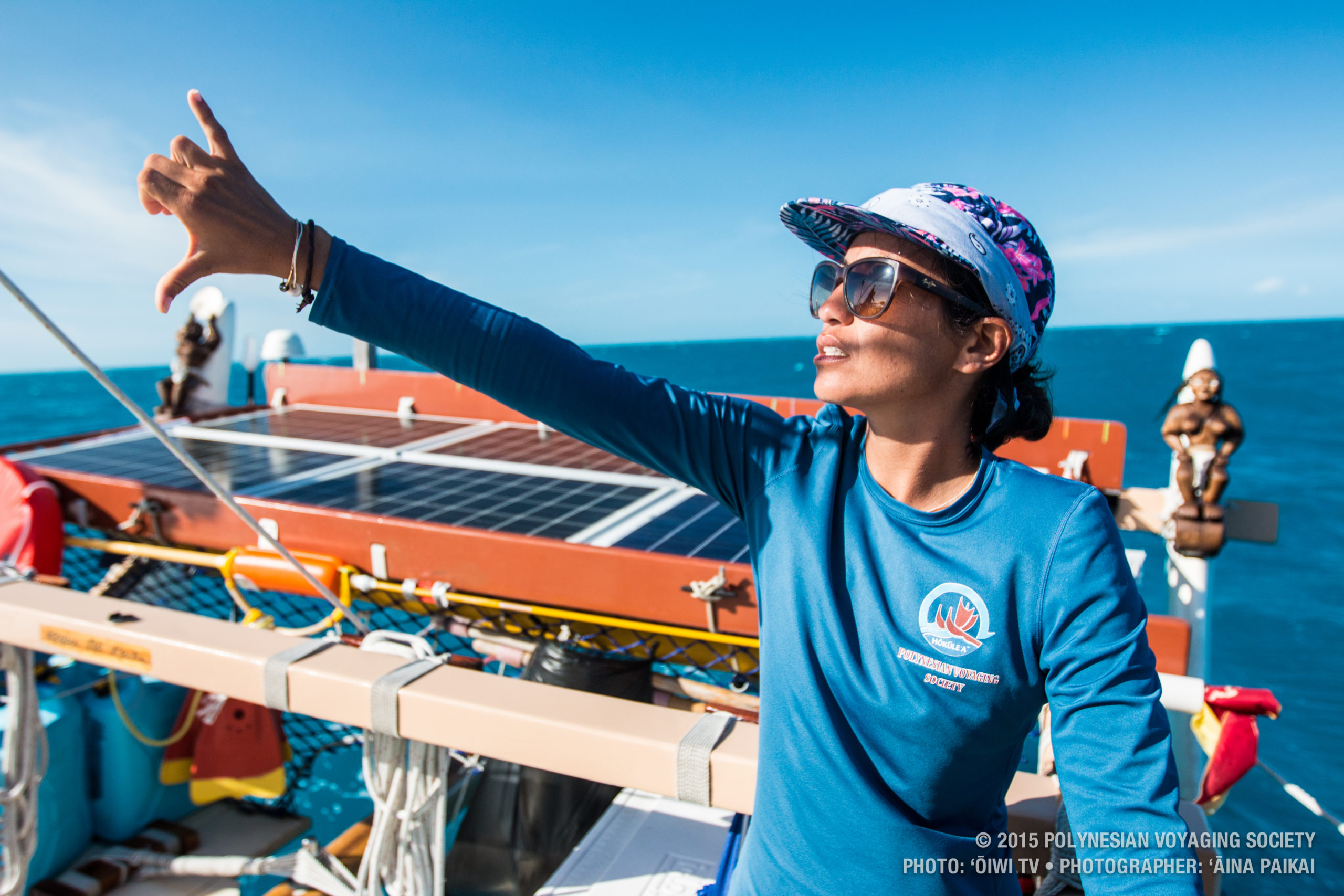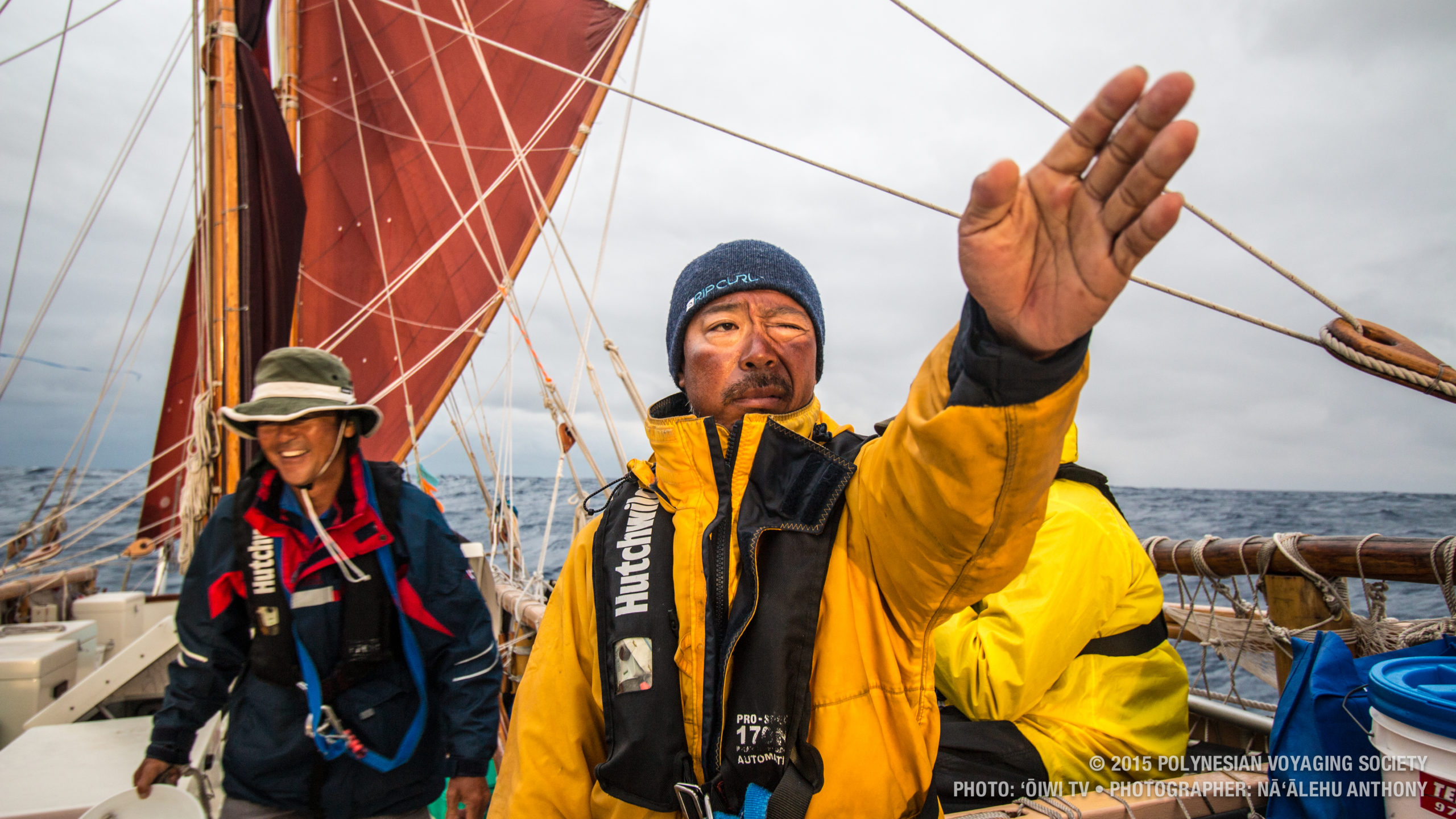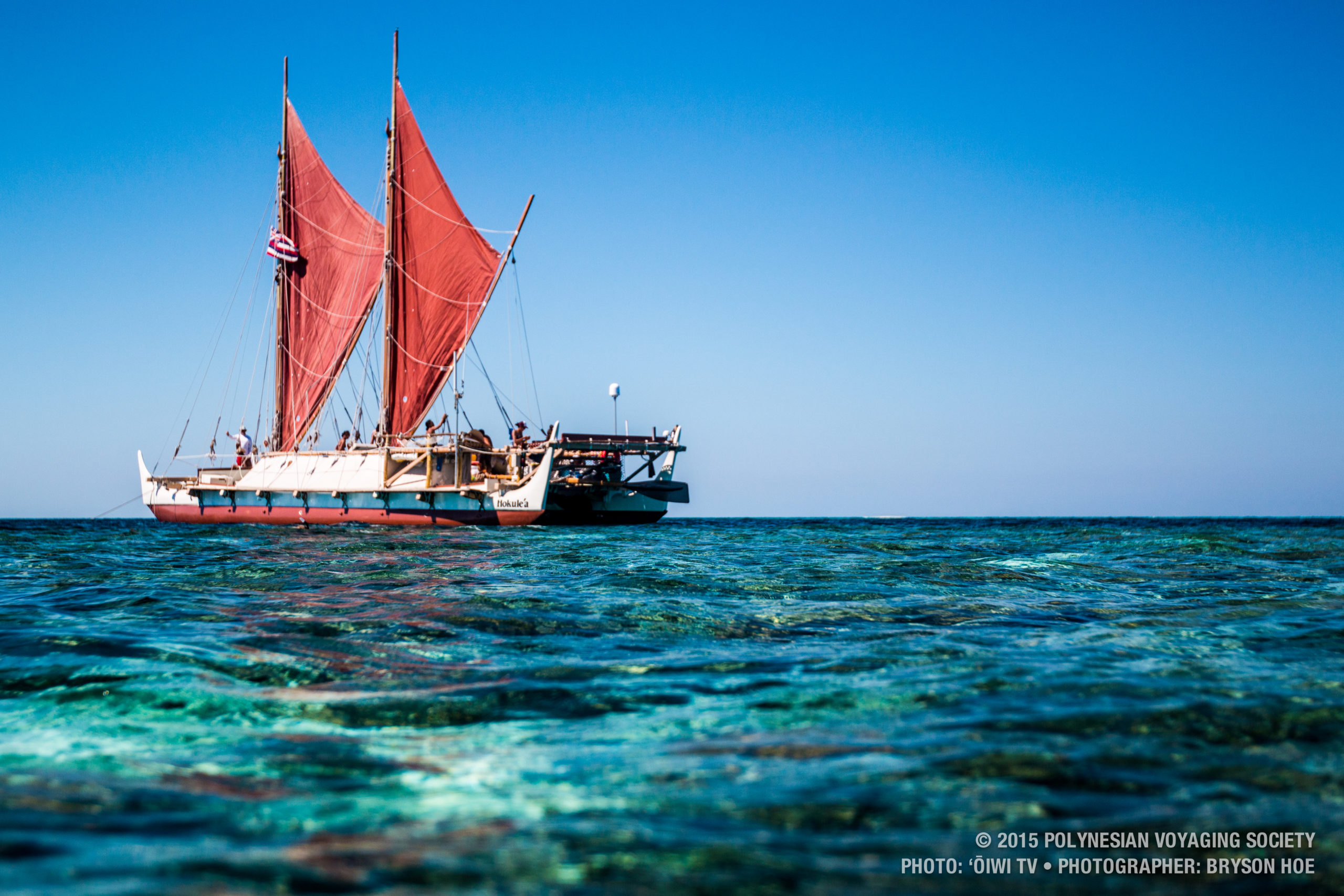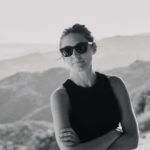Welcome to season two of A Little Green, a podcast from Avocado Green Brands. This season, we invited guests to share stories about how the outdoors have impacted them in positive, life-changing ways. Listen to all eight episodes here.
In episode one, we heard from Lehua Kamalu, a native Hawaiian who discovered a deeper appreciation for nature and the importance of preserving her community’s culture during a three-year journey at sea.
Here is her story.
Christina Thompson: And we’re back! Another year and another season of A Little Green, an Avocado Green Brands podcast. My name is Christina Thompson, which of course you already know because you’ve listened and liked, and subscribed to the first season, right? Last season, we dove headfirst into many of your pressing questions, and mine, about climate change.
We wanted to better understand our own role in protecting the planet and our future. What actions, conversations, and changes, large and small, can help save our planet?
“Save the planet.” It’s a familiar rallying cry for the environmentally conscious, right? But we started to wonder if there might be another question we could be asking, or rather, another way we could be asking that question. What if we flip this whole “save the planet” notion on its head and ask instead, “How has the planet saved us?”
So, we ran with it and season two was born. We scoured the country and reached out to people from all over looking for stories that answer this very question, and we were not disappointed. We heard so many amazing stories of lives changed, inspired, and made better by nature, and this incredible place that we all call home: Planet Earth.
To kick things off, we have a tale of adventure on the high seas that begins in one of the most beautiful places on Earth. This first story comes to us from Lehua Kamalu.
Tune in to Episode 2: The Power of Hiking For Mental Health

Lehua Kamalu: We have a very important story known as the Kumulipo, which is the origin story of the entire universe. It literally starts at the beginning of time in darkness, and it moves through the development of, you know, sea creatures, amphibious creatures, land creatures, and man who comes from this genealogy of nature and all of these things that are around us in the environment here in Hawaii, down to, like, the sea mollusks. Nature is your family in Hawaiian culture.
My name is Lehua Kamalu, and I just live about half a mile away from the world-famous Waikiki Beach in Honolulu, Hawaii. It’s pretty amazing just to be able to walk down there every day. My parents are part native Hawaiian and both of them really wanted me and my sisters — I happen to have five sisters — to really grow up in the experience of being immersed in the culture and the place that is Hawaii.
I’d say everyone in Hawaii is pretty much an outdoors person. I mean, your backyard was the beach. All my childhood friends, our place was outside and enjoying the outdoors. A lot of comfort and enjoyment comes from being out there in the water.
Growing up in Hawaii, our relationship with nature is infused into our everyday lives, into the language we use, into every part of our day. When my parents moved with us back home here, they had just been starting what’s known as the Hawaiian Immersion Program here in Hawaii. And it was a public school program where all of the teaching was done completely in the Hawaiian language.
At one time in Hawaii, even within the English and Hawaiian languages, the Native Hawaiian community was known to be, you know, 98 percent literate, very well educated. There was a drastic change in that.
Teaching and, and speaking Hawaiian language had basically been banned over time. Native Hawaiians started not having access to education. There was a major population loss, and, of course, when you’re losing your ancestors, you’re losing your elders of your community, you’re losing language and culture as part of that.
And so what you had was my parents’ generation where almost no one spoke the language. Our grandparents’ generation who could understand and speak some — they could certainly scold you in the language. My great-grandparents would’ve been much more fluent in Hawaiian language, but that was a hundred years ago.
These things not only affect you physically, they affect how you think about yourself and how you think about your, your pride as a native Hawaiian. I would say there was a pretty significant decline until pretty much the sixties and seventies, which is when a number of really incredible teachers and pioneers started to change that.
They said, “You know, in order for us to save this culture, we need to save the language.” And so I was part of one of the early classes in Hawaiian immersion that were completely taught in the language. Anyone who speaks more than one language will understand how that helps to give you perspective on the different ways to see the world and different ways to move through life.
I really have to credit that with setting a solid foundation for how I would begin to understand connection to nature, connection to place, connection to people.
Tune into Episode 3: How Camping Saved a Marriage

There was an intentional decision to make sure that we knew as very young children that we came from an incredible people, an incredible heritage. And one enormous part of that is, “Where did you come from?” And that question here in Hawaii always leads back to the voyaging canoe. And that’s really the story.
You know, it’s how you got 2,500 miles from Tahiti to Hawaii.
So the canoe has two hulls. Uh, it’s not like a, a river canoe. It’s pretty large. It’s made of wood on the inside and completely lashed together through miles of cordage and line. It’s 62 feet long. The masts stand about 32 feet high, and it’s about, I’d say 21 feet wide across the deck. And it fits about 10 to 12 people who can sail comfortably on board.
The practice of voyaging on the canoes is done without the use of modern navigational instruments. Hōkūleʻa is a Hawaiian name for the star Arcturus, and it is the name of a voyaging canoe that was built in 1975 here in Hawaii. And it conducted a maiden voyage to Tahiti and back using no instrumentation for navigation.
And this single voyage really changed the perspective of everyone who had, I’d say, doubted the intelligence, doubted the ability of the Native Hawaiian, or the Polynesian, or the Pacific Islander who came from a culture and practice of doing these incredible things. And so we got to be a part of that because we were being taught the old chants, the songs that were used when these canoes were built and that had been passed down and had not been lost. To us, this was the equivalent of going to Cape Kennedy and watching a shuttle take off.
The canoe continued to keep voyaging through my childhood. I was, you know, getting older, getting into high school and college, and I had really planned on pursuing a pretty rigorous STEM engineering track; thought it was a good economic idea, and I also really thought that this was the way I was gonna apply myself as a young Hawaiian, as a young woman.
Many of my classmates and friends, a lot of people make the conscious decision to move away, not because they necessarily want to, simply because it’s economically the best decision. And there’s always some struggles there of the fact that you may never be able to return. Um, you may never be able to afford a home, or to sort of retire here, to raise your children here.
If you know that people make up a place and you see the people just steadily leaving the place, you start to wonder, you know, will, will the next generation ever know the kind of Hawaii that we think is so amazing? Are they gonna forget why this particular place is so sacred and so special to us?
I really wondered if the work I would do as an engineer was going to outweigh the potential work I would do as someone who could help be an ambassador for these ideas and these perspectives about nature and about the environment, about the world. What am I uniquely capable of doing because of this incredible place that I was so lucky enough to be in, in a time of this incredible transformation?
Tune into Episode 4: How an Endangered Butterfly Inspired Hope and Healing

It wasn’t until really in college that I reconnected with the Voyaging Society. My sister said, “Hey, they want to go on a sail around the world with Hōkūleʻa.” This incredible canoe, this wa’a that we had learned about as children. And even though I always knew it was doing these epic voyages and these like superhuman feats, I didn’t actually think it would go around the world.
So she got me to come to, like, the very first meeting, which was about training crew, seeing who was interested in doing this. They were looking at who’s the next generation that’s going to be sailing these canoes, leading these canoes, leading this effort that has been such a powerful symbol of pride and history and genealogy of Hawaii.
I really had a moment to decide whether or not I was going to sort of move away and, and do the engineering thing or stay here and help in this way. I just felt like, you know, this was the time. If there was ever a time that you were gonna make a critical decision to lean into this and see how far we can take this idea and this little humble canoe and make a difference in how we need to be thinking about the world around us.
I sort of came to this realization that it was the only pathway at some point.
That first meeting was in fall 2009, and I don’t think I missed a meeting after that. And we were meeting three to four to five times a week to talk about: why we were going around the world, how we were really going to share a message, who was going to do it, and how do you get ready to go? We were physically training, and swimming, and paddling, and studying the stars. It had actually been four years of training, and I’d learned every single part of the vessel. I learned all about the very microscopic geographies of every possible coastline that we were going to go to. And it wasn’t until 2014 that we actually left Hawaii to start the voyage around the world, which was a three-year journey. And I was on the very first voyage out of Hilo, Hawaii, and that was my very first big open ocean voyage. Boy, oh boy. I really was shocked at how much I didn’t know.
Onboard the voyaging canoes, there’s many roles: we have our captain, who is in charge of all the operations on deck, sail masters, who are in charge of keeping our sails in good working order, carpenters, fishermen. The one that probably gets the most attention is the navigator. I was very fortunate to be part of a student navigation team on the trip, and the navigator’s job on board of the canoe is to guide the course that we are sailing.
And you don’t have any tools to do that, right? You literally have to figure out how to orient the canoe to the surrounding environment, and you’re going to use every natural cue that you have studied before you left: the sun, the moon, the stars, the wind directions, the wave patterns. All these things working together to give you a sense of what direction you’re heading in at any given moment along the trip.
All of it is really about knowing nature by yourself, for yourself in your own way, and no one really can tell you how to see the world around you. You really have to experience it. You can’t disconnect yourself from the feeling, the motion, the wind, the sound. This is your responsibility 24 hours a day.
I think that voyage really was me understanding that I had to accept how much I didn’t know. It was humbling. I’ve never had a more immersive experience in nature ever.

You know, the open ocean is its own space. I almost think of it like you travel through some portal at some point and you are just, you have left society. What you do is what you do and the consequences of what you do are immediate usually, and everything you can do to prepare for it is going to come ahead of time before you leave land.
And that was really, a lot of us, our first time really spending the time in a very different world. As a person in the middle of the ocean, you are certainly not in a place of creature comforts. You are in the sun throughout the whole day. You are in the salt spray throughout the whole day. You feel wind and waves constantly. You know, it’s cold, it’s windy, it’s wet, it’s salty, but there is a peaceful sort of tranquility to it all.
Whatever you’re worried about on land is not even remotely relevant anymore. It’s not important. You are in a different ocean, you’re in a different space. You think, “Gosh, the people who lived in Hawaii, my ancestors, I don’t know how many generations back, somebody traveled this road in the same way and in the same fashion.”
What did Hawaii look like on that first arrival, and how do you even begin to encounter a new place?
When we left, you know, I’d say we had a pretty passionate, very supportive community here in Hawaii, in the Pacific. And going around the world suddenly was a realization of how large of a community this canoe and this little tiny place could bring people together. And the theme and the voyage mission really was this Hawaiian phrase that’s known as Mālama Honua, that means to care for the Earth, and it was the best way we could describe what was most important on that voyage.
Voyaging in every step of the process is continually forcing us to pay attention to the Earth. Whether it’s building the canoe and trying to find the plants that no longer grow, the ones that were over-logged, to figuring out if we can eat in the ocean that was overfished, to understanding whether or not the weather systems that let us sail this ocean today are still going to be the same ones tomorrow.
Will they create new pathways between different places? I mean, there’s no way you voyage without trying to know the earth better every single time you go out there. I think one of the powers of this little canoe and this practice of navigation is this resilience, this adaptability, this moving forward into the future and keeping these really important parts of our culture, our history, and our traditions alive.
I wish I could literally take everyone out there.

Christina Thompson: Lehua returned to Tahiti earlier this year. This time, she was the sole navigator and captain along that nearly 3000-mile journey. You can hear more about Lehua and the Polynesian Voyaging Society’s work www.hokulea.com.
A Little Green is an Avocado Green Brands podcast.

Shop Pillows
The Essential Organic Pillow Collection
Gentle, breathable, non-toxic support.





